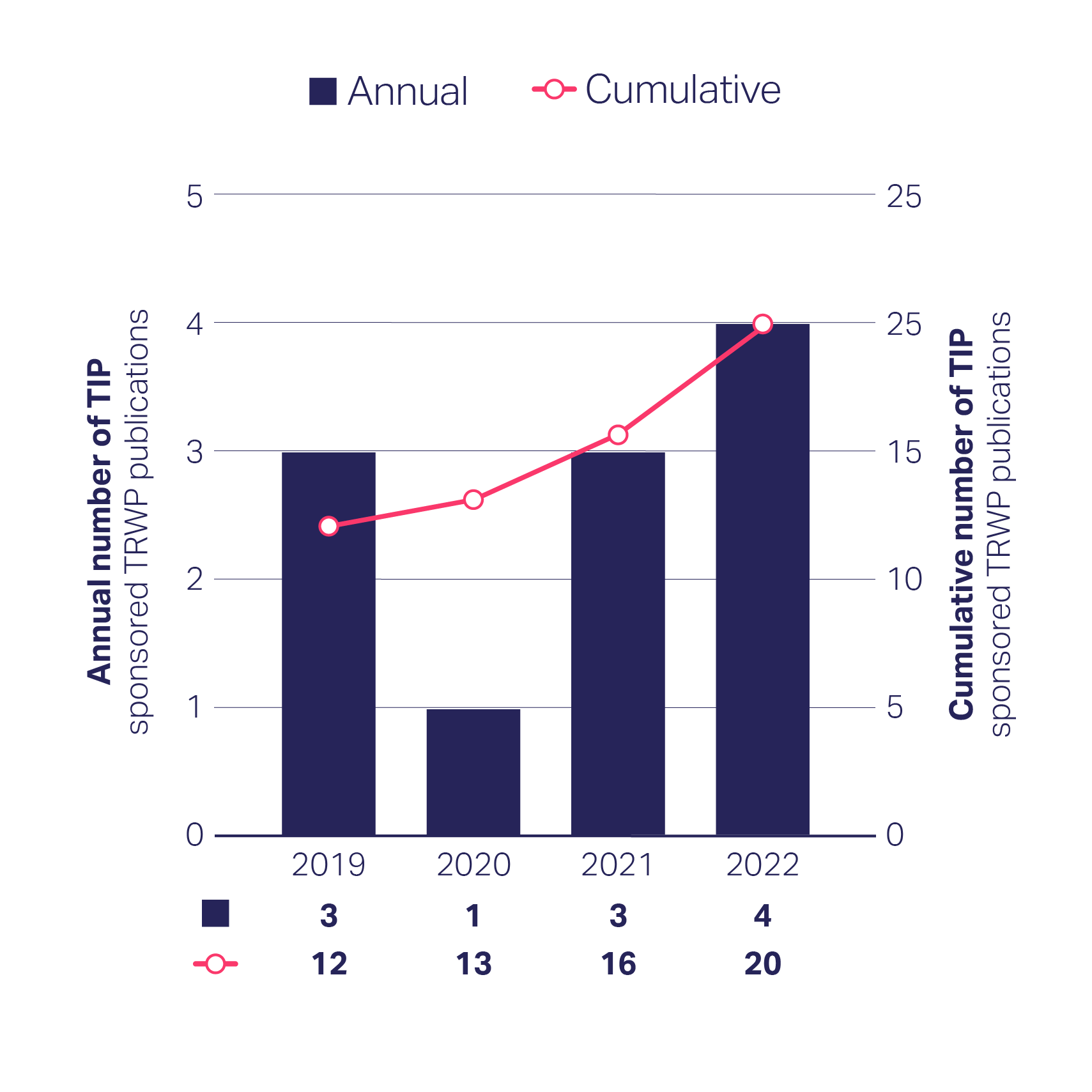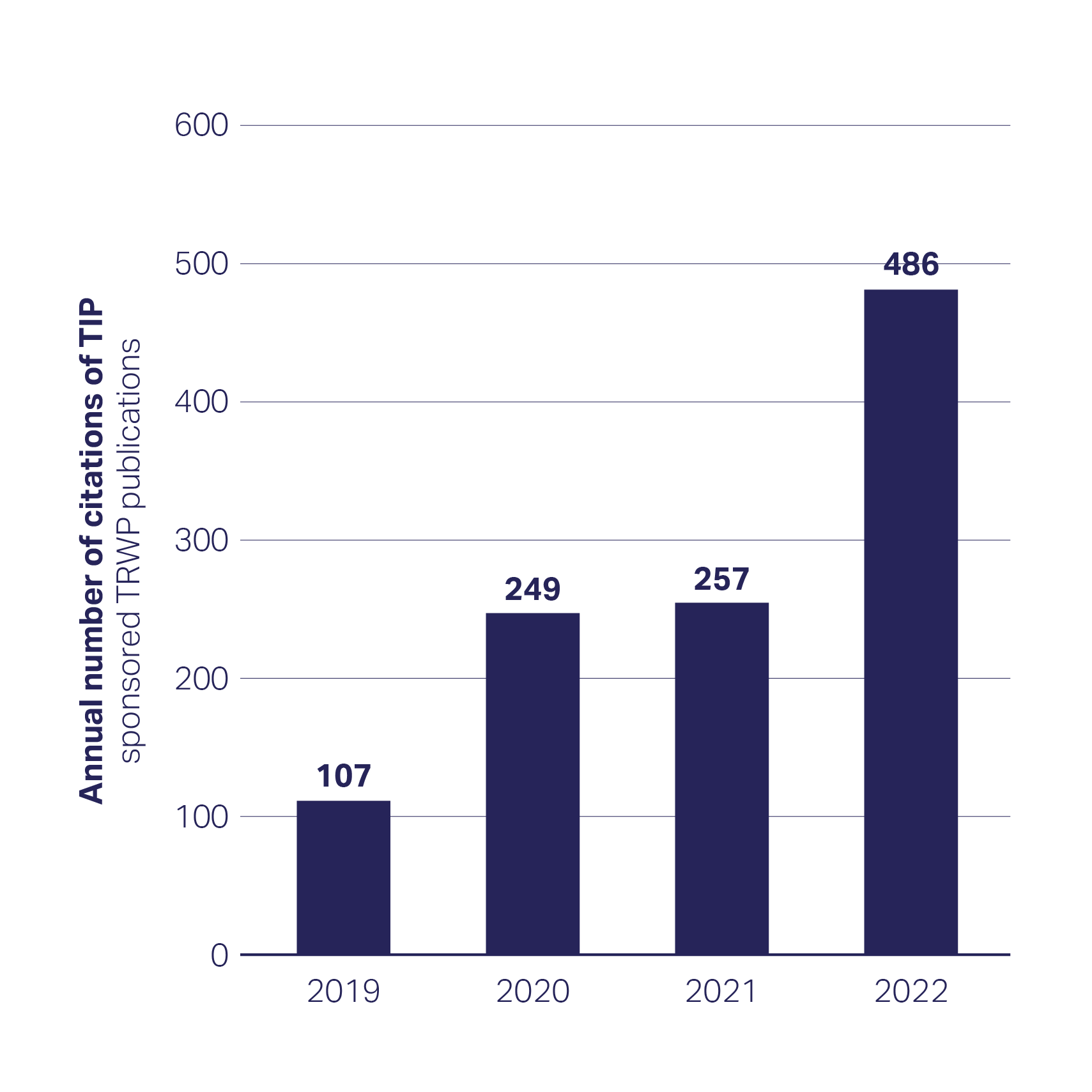
Impact Pathways
TIP identified seven opportunities where the tire sector can have transformative impact and contribute to the SDGs across three main themes: supply chain, operations, and products and services.

Tire and Road Wear Particles (TRWP)
Annual and cumulative number of TIP-sponsored papers concerning TRWP published.
2019-2022

Annual number of citations of TIP-sponsored publications concerning TRWP.
2019-2022

Since 2005, TIP has supported research into the potential human health and environmental impacts of tires throughout their life cycle. Much of the research supported by TIP has been published in peer-reviewed journals
- Key areas of ongoing research for TRWP include:
- The physical and chemical characteristics of TRWP;
- The development of methods to analyze and quantify TRWP in the environment;
- The pathways of TRWP in the environment;
- The degradation of TRWP in the environment;
- The potential impact of TRWP on human health and the environment
